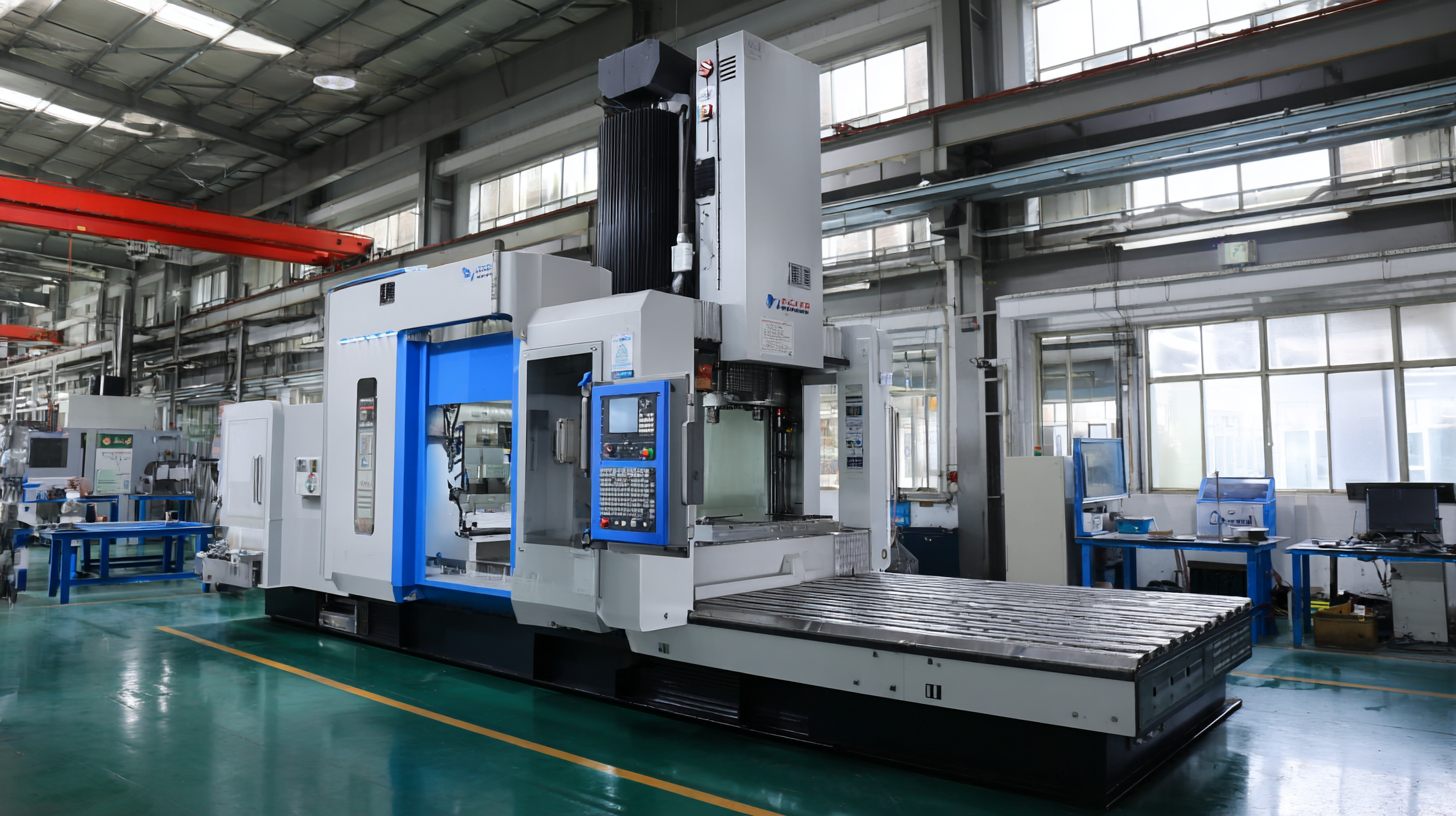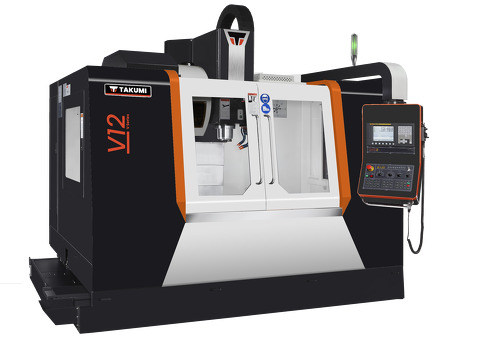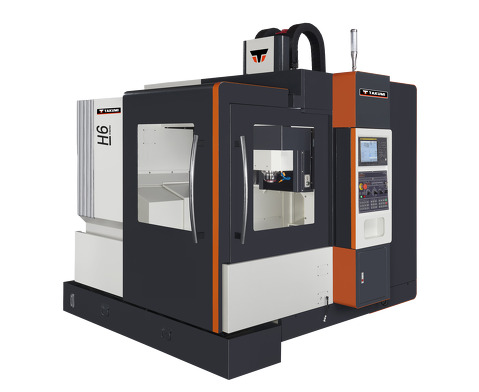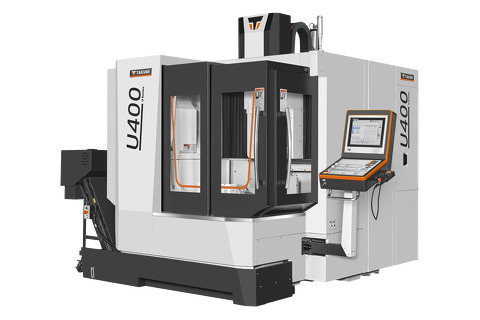- Machining center
- Control
- News & Media
- Company
- Blog
- Contact
Unlocking the Technical Specifications of the Best Vertical CNC Machine for Peak Performance
In today's fast-paced manufacturing landscape, the demand for precision and efficiency has never been higher, prompting industry leaders to seek out advanced solutions such as the vertical CNC machine. According to a recent report by MarketsandMarkets, the global CNC machine market is projected to reach $117.5 billion by 2026, with vertical CNC machines playing a crucial role in this growth due to their adaptability and superior capabilities in various applications. These machines not only enhance productivity but also improve product quality, making them indispensable in industries ranging from aerospace to automotive.

As we delve into the technical specifications of the best vertical CNC machines, this ultimate guide aims to provide manufacturers with the insights needed to optimize their operations and achieve peak performance in a competitive market.
Identifying Key Features of High-Performance Vertical CNC Machines
When evaluating high-performance vertical CNC machines, several key features emerge as critical for optimizing efficiency and productivity. First and foremost, precision is paramount; machines must provide high accuracy in machining operations to ensure the quality of the finished products. Advanced features such as robust spindle designs and sophisticated linear motion systems significantly contribute to achieving and maintaining this precision. Additionally, the integration of real-time monitoring systems allows for proactive maintenance and minimizes downtime, ensuring that production processes run smoothly.
Another important aspect is the machine's adaptability to various materials and cutting conditions. High-performance vertical CNC machines are equipped with cutting-edge technological solutions that enable operators to seamlessly switch between different machining tasks without compromising performance. The incorporation of machine learning algorithms for tool wear predictions further enhances operational efficiency, allowing for data-driven decisions that optimize tool life and minimize scrap. As the CNC machine market continues to expand, these essential attributes will define the next generation of vertical CNC machines, ensuring they meet the demands of modern manufacturing environments.
Evaluating Supplier Credentials and Industry Experience
In today’s competitive market, evaluating supplier credentials and industry experience is paramount for businesses looking to invest in high-quality machinery, such as vertical CNC machines. Buyers must adopt comprehensive strategies to scrutinize potential suppliers, ensuring they have a proven track record in the industry. Factors to consider include the supplier's years of operation, the range of products offered, and the technological advancements incorporated into their machinery. A supplier with a deep understanding of CNC technology and experience handling diverse customer needs can significantly impact production efficiency and product quality.

Furthermore, as the technology industry anticipates growth in 2025, driven by increased AI investments and IT spending, the demand for specialized machinery is likely to rise. In this evolving landscape, buyers must navigate the complexities of a global supply chain by leveraging modern sourcing strategies. These may include utilizing data analysis to assess supplier performance, fostering partnerships with established manufacturers, and maintaining an agile approach to adapt to market shifts. With proper evaluation and strategic sourcing, businesses can secure the best vertical CNC machines to enhance their operational capabilities and drive innovation.
Essential Checklist for Assessing CNC Machine Specifications
When assessing the specifications of a vertical CNC machine, there are several critical factors that must be considered to ensure peak performance in manufacturing processes. First and foremost, spindle speed is a key specification; studies have shown that spindles operating at 10,000 RPM or higher can significantly enhance productivity by reducing cycle times. According to the International Federation of Robotics, machines that feature higher spindle speeds can achieve up to 30% faster processing times, directly impacting efficiency in high-volume production environments.
Additionally, the machine's feed rate and travel dimensions play a vital role in operational capabilities. A report by the Association for Manufacturing Technology indicates that machines with a feed rate exceeding 100 inches per minute not only improve material removal rates but also minimize the likelihood of tool wear and tear. Moreover, adequate travel dimensions allow for processing larger workpieces, which is essential in sectors like aerospace and automotive where component sizes can be substantial. Evaluating these specifications through a comprehensive checklist can ensure that the chosen vertical CNC machine aligns with the specific needs of any manufacturing operation.
Unlocking the Technical Specifications of the Best Vertical CNC Machine for Peak Performance - Essential Checklist for Assessing CNC Machine Specifications
| Specification | Details |
|---|---|
| Machine Type | Vertical CNC Milling Machine |
| Axis Configuration | 3-Axis / 5-Axis |
| Max Table Load | 2000 kg |
| Spindle Speed | 10,000 RPM |
| Tool Change Time | 1.5 seconds |
| Positioning Accuracy | ±0.005 mm |
| Repeatability | ±0.002 mm |
| Control System | CNC with Touchscreen |
| Power Consumption | 15 kW |
| Weight | 2500 kg |
Understanding After-Sales Support and Maintenance Options
When investing in a vertical CNC machine, understanding the after-sales support and maintenance options is crucial for ensuring peak performance over time. Comprehensive after-sales support can significantly enhance the longevity of your equipment. Look for manufacturers who offer robust technical assistance, quick response times, and various channels for communication, such as phone, email, or live chat. This ensures that when issues arise, you have access to expert help promptly.
Tips: Always inquire about the availability of spare parts and the speed of their delivery. A good supplier should stock essential components to minimize downtime. Additionally, consider whether the manufacturer provides training for your staff, as proper operation and basic troubleshooting can prevent common errors that lead to costly repairs.
Regular maintenance is another key aspect of after-sales support. Opt for companies that offer maintenance contracts, which can ensure your CNC machine remains in optimal condition. Scheduled maintenance checks help identify potential issues before they escalate, saving time and money in the long run.
Tips: Create a maintenance log to track services performed and parts replaced. This not only keeps your machine running smoothly but also provides valuable information for future upkeep and manufacturing audits.
Performance Metrics of Vertical CNC Machines
Comparing Cost-Effectiveness Among Leading CNC Suppliers
When evaluating vertical CNC machines, understanding cost-effectiveness is pivotal, particularly in a market flooded with options from various suppliers. According to a recent report by Research and Markets, the global CNC machine market was valued at approximately $80 billion in 2022, projected to expand at a compound annual growth rate (CAGR) of 6.2% through 2030. This growth rate underscores the competitive landscape where companies are pressed to balance performance with cost to attract discerning customers.
Leading CNC suppliers such as Haas Automation and DMG Mori offer machines with diversified pricing models. For instance, the entry-level Haas VF-2 offers robust features at around $50,000, targeting small to mid-sized manufacturers seeking reliable performance without exorbitant costs. In contrast, more advanced models from DMG Mori can reach upward of $200,000, aimed at enterprises that demand precision in high-volume production settings. A recent survey indicated that buyers prioritize total cost of ownership—factoring in maintenance, operational costs, and potential downtimes—above initial purchase price, which drives many to opt for suppliers offering comprehensive support and training.
The growing trend of automation and smart manufacturing further complicates cost assessments, as investing in technology can yield significant long-term savings. A study from the International Federation of Robotics (IFR) reveals that manufacturers integrating automation can see productivity increases of up to 30%, which can offset higher initial investment costs in premium CNC machines. Thus, the key to unlocking the best value lies in a thorough comparison of not just prices, but the potential return on investment each machine can deliver over its service life.




